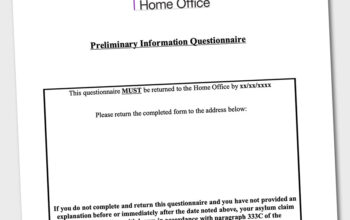By: Sharon Thandi ![]() @SharonThandi07
@SharonThandi07

Housing’s ‘diversity problem’ is nothing new and is a subject that has been talked about for a number of years with no clear ‘solution’. It’s widely acknowledged that the sector has a responsibility to address this and the time is ripe for housing associations to decide what role they want to play and how they move forwards, writes Sharon Thandi.
In recent months inequalities within our society have been thrust into the limelight forcing us to take notice of problems so many communities within the UK are facing. These racial inequalities are often a matter of life or death, whether we look at the grossly unjust killings of US citizens including George Floyd and Breonna Taylor at the hands of police authorities and reigniting the Black Lives Matter movement across the world like never before, the Windrush scandal here in the UK, the Grenfell tragedy, to the stark inequalities of how COVID-19 is impacting us all. The significance cannot be downplayed.
For a virus that we were first told didn’t discriminate, the evidence tells a very different story. It is clear now that COVID-19 is disproportionately impacting BAME communities both in terms of health and income. Almost all of the research demonstrates that minority communities are over represented in hospital cases and death rates, with Public Health England’s own report stating that “death rates from COVID-19 were higher for Black and Asian ethnic groups when compared to White ethnic groups”. The reasons behind this are still not clear; however, Professor Kevin Fenton’s report on “Understanding the Impact of COVID-19 on ethnic minority groups” highlighted the role that socio-economic deprivation plays in the risks that people of a BAME background face from COVID-19. Professor Fenton discussed structural issues including racism, destigmatisation, discrimination and distrust and whilst the pandemic didn’t cause these issues to occur, it has certainly shone a floodlight on them.
These inequalities mean that BAME communities are also set to face a disproportionate impact on their finances and income as a result of the pandemic as the whole of the UK braces itself for an economic downturn. According to the latest annual report by the Social Metrics Commission BAME households in the UK are over twice as likely to live in poverty as their white counterparts, leaving them disproportionately exposed to an economic downturn
What about the Social Housing Sector?
We’re all acutely aware of an under-representation of diversity within the social housing sector at senior leadership levels, yet we also know the benefits of having a diverse workforce and leadership team. There is substantial research to show that diversity brings many advantages to an organisation – increased profitability, creativity, stronger governance and better problem solving skills, breaking down the dangers of homogenous group-think, just to name a few. Colleagues with diverse backgrounds bring their own experiences, helping to create organisations that are resilient and effective and which outperform their less diverse counterparts (see McKinsey Report ‘Diversity Matters” 2015).
The social housing sector has a large customer base representing nearly one-fifth of all households in the UK, that’s some 9 million homes. If you’re from a BAME background you are more likely to be in social housing than your white counterpart: 43% of all black households in the UK live in social housing compared with 16% of white households and 25% of all ethnic minority households. Through the provision of services to this customer base, the sector has an opportunity to have a profound and positive connection with, and impact on, diverse communities. Redesigning and changing how organisations serve residents and provide services can also help to better engage with the BAME communities that housing associations serve.
Whilst on the face of it the most recent Inside Housing Survey carried out in 2019 showed small increases in BAME representation at Board and leadership levels when compared to its survey carried out two years earlier, the reality was that of the 300 housing associations asked, only 61 organisations (i.e. 20%) responded and so the true reality may not be being told by these statistics. Of those 61 respondents, 25 answered that they had no BAME board representation (or did not have the data available) and 41 had no BAME executives (or did not have the data available) demonstrating that organisations may not be appropriately monitoring or lack the tools to monitor diversity within their organisations. This isn’t a problem isolated to the social housing sector by any means; lack of diversity in leadership levels permeates across many sectors, with a 2018 study showed that there were more CEOs called David or Steve who headed up FTSE 100 companies than there were women or ethnic minorities! Despite the widespread nature of this problem, many who work in the social housing sector agree that it has a moral obligation to tackle this issue head on and ensure it represents its communities at all levels.
What does the sector want to represent?
Social housing has a strong and proud social purpose at its core and the consensus is that it should and needs to be doing better. At a time when housing associations are navigating extremely uncertain waters whilst balancing their wide-ranging responsibilities it might be easy for equality, diversity and inclusion to slip down the list. However, when residents themselves are feeling further alienated from the organisations serving them, diversity (or the lack thereof) just isn’t something that can be ignored.
There have also been discussions within the sector as to whether housing associations have lost ground on these issues, with fewer specialist BAME housing providers than there were in the 1980s and 1990s. The former Housing Corporation requirement to employ BAME people (which fell away with its abolition in 2008) has also not been replaced by any similar regulatory obligation. The current regulatory regime of co-regulation and the statutory obligation of the Regulator to “minimise interference” stresses the importance for associations to take responsibility and deal with these issues, rather than waiting for rules to be enforced by the Regulator.
So what’s next?
The time is now
Whilst these issues are nothing new, the willingness to discuss them, to tackle them with honesty and the desire to do better has been refreshing to see. There is a renewed energy and the spotlight is firmly on how the sector can be more representative. Many have also commented on the willingness to have an open dialogue about these issues where there may have been reluctance to do so just a few months ago. Whilst this article has largely (and rightfully) focused on race, to be truly representative of their communities, organisations need to embrace people from all walks of life including gender, LGBTQ+, disability, religion, age and socio-economic backgrounds.
Organisations are now rewriting business plans and reviewing the services they are providing in light of the pandemic. The majority of the sector appreciates that there will not be a return to business as usual, so what better time than now to look at how diversity and inclusion feeds into all of this work and helps to achieve better outcomes for the communities being served?
Honest and critical evaluation
Organisations need to be honest and critical about their strengths and weaknesses in relation to equality, diversity and inclusion issues. Holding a mirror up and analysing what works and what hasn’t is an important starting point in taking stock and moving forwards. Organisations need to review what data they have (or in some cases what they don’t have, and the reasons for this) and what it shows.
Set a strategy and objectives
Working towards diversity and inclusivity within an organisation is not a “one size fits all” journey. Housing associations should set strategies and policies that are unique to their organisations and the communities they serve and resident involvement should be at the heart of this.
An important part of this will be setting key measurable and KPIs, because, as the old saying goes, “what gets measured, gets done”. Housing associations should be ambitious in their targets for change. What do you hope to achieve? Who are your key stakeholders? How are you as an organisation going to ensure you can be held to account by your stakeholders? How will this form a key part of corporate plans going forward? Diversity isn’t a one-time issue to “solve” or a box that can be ticked, it is something that should remain at the heart of organisations at all times.
Take a top-down approach
A true commitment must start from the very top. The Board must be fully committed to, and recognise the importance of, equality and diversity in order to promote truly inclusive organisations in the same way that development or financial performance would be valued. Ensuring equality, diversity and inclusion is embraced at this level ensures that this culture will permeate throughout organisations.
It would be a bold move for a housing association to openly state it’s Board and leadership does not properly represent the communities it serves, or that their organisation needs to do better on promoting inclusive leadership. However, this should not be seen as a mark of failure, but a constructive challenge in which all Board members and senior leaders have a part to play.
The consultation on the anticipated new National Housing Federation Code of Governance emphasised the pivotal role governance plays in this area when it discussed principles of diversity, building trust in communities and with residents. The governance structure dictates policy and strategic direction, and putting renewed strategies and policies at the heart of this direction will help achieve this.
Review recruitment strategies
Whilst the impact of Covid-19 has seen the sector further embracing technology, it would be naïve to think that using technology alone will help to drive better representation. Using the exact same process to advertise for, shortlist and interview candidates for executive or Board positions with the slight change of a virtual interview isn’t going to shake up the status quo. Instead, organisations need to critically assess how recruitment is taking place and take positive action to achieve real change. Organisations should look critically at their recruitment processes and any current diversity strategies and challenge themselves – where are our adverts being published, how long are they out for, are we allowing for people to ask questions about the advert, what kind of language are we using – is this housing jargon and are we putting enough emphasis on softer skills? Selection panels should, where possible, also be more diverse, and organisations should actively keep a check on any assumptions made to look out for unconscious bias.
A critical review of your recruitment processes go hand in hand with putting in place training programmes to support and develop current Board members and leaders, alongside looking at future Board members to help upskill candidates who might not ordinarily think they meet the requirements for the job. Organisations such as the Housing Diversity Network have great programmes to train future Board members and help with succession planning. We are also starting to see leadership programmes being set up across the sector to tackle the issue of the lack of representation in senior leadership.
Be prepared to be radical
As a sector, we need to be honest that current methods aren’t working well enough, so it’s time to shake things up. We are seeing great examples of innovative methods that are helping to promote diversity and inclusion, and these need to be adapted and embraced to fit different housing associations and the communities they serve, This could include measures such as Board shadowing and mentoring, reverse mentoring, greater use of co-optees and observers, setting up equality and diversity committees of the Board, and greater adoption of sector wide leadership programmes such as the programme recently launched by the G15.
As we move into the next phase of longer term planning, there is a unique opportunity to build something new, rather than returning to existing models. Housing associations are ripping up business plans and services provisions and re-writing these in order to deal with the “new (ab)normal” so there is a unique opportunity to grasp this diversity challenge and to put these strategies at the heart of business plans going forwards. Don’t be afraid to be bold!
Author Bio
Sharon Thandi is an Associate solicitor at Penningtons Manches LLP and a member of the Birmingham Law Society Equality and Diversity Committee and part of the CIH Regional West Midlands Board. Her twitter is @SharonThandi07




One thought on “Housing’s diversity challenge – Time for a bold approach to embracing inclusive leadership”